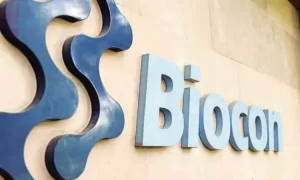
Dr Pradeep Mahajan, Regenerative Medicine Researcher
Down syndrome (DS) is a condition wherein the affected individual possesses an extra copy of chromosome 21 (Trisomy 21). This excess genetic material affects the physical and cognitive development of the individual. As per reports from the Center for Disease Control (CDC), the worldwide incidence of DS is one in every 1000 births. Unfortunately, in India there is a critical lack of exact population-based data on the birth prevalence of DS.
Common physical traits of individuals affected with DS are low muscle tone, small stature, an upward slant to the eyes, and a single deep crease across the center of the palm. However, these features are not standard and may vary from person to person. Delays in developmental milestones, impaired social and cognitive skills are common in affected children. About 40-50% children with DS may develop cardiac, intestinal abnormalities (as seen in our patient who had atrial septal defect and narrowing of the lumen of the small intestine). Children with DS are also at increased risk of thyroid, respiratory, vision and nerve related abnormalities. In general, a tendency towards immune-suppression exists in such individuals. Master Shayne also used to experience frequent episodes of cold and cough.
While no definitive causative factor has been implicated in occurrence of DS, advanced maternal age was once thought to be the chief cause. This has now been challenged as close to 80% of new cases of the condition are seen in children born to younger women (under 35 years of age). Moreover, approximately 5% cases have been traced back to paternal origin. Despite being a genetic condition, hereditary component accounts for only 1% of all cases. Down syndrome is the most common cause of intellectual disability among live born children; however, is amenable to prenatal detection.
Early intervention and therapy remains mainstay in enhancing development and social, cognitive skills. Treatment goals are directed towards improvement of life expectancy, though conventional therapies do little in improving quality of life. In recent times, regenerative medicine and cell based therapy has been garnering attention in the treatment of various health conditions. In DS, studies have shown reduction in the intensity of symptoms when cell based therapy is carried out at an early stage. Structurally, it has been postulated that neurons in patients with DS are shorter, irregular and have misshapen axons along with fewer dendrites. Mesenchymal stem cells have been shown to have neural differentiation potential, therefore may aid in regeneration of normal neurons. Additionally, it is well known that mesenchymal cells have immunomodulatory property, therefore can prevent occurrence of immunological deficiencies.
Case Study:
Master Shayne is an eight-year-old male from Uganda who had issues in interacting with other children of his age as well as with his family (except his parents). He also lacked self-care skills and was a slow learner. Shayne was diagnosed as a case of Down syndrome early after birth and has ever since been a cause for concern to his parents. His family was worried about the fact that Shayne would have to be dependent on others for his daily living activities all his life.
Master Shayne underwent three sessions of cell based therapy along with neurorehabilitation. “It is amazing to see the response of the child to the combination protocol. Shayne is now able to follow commands and solve skill-based activities such as building blocks, basic puzzles. Improvement in concentration is observed, which was of chief concern before treatment,” says Dr. Pradeep Mahajan, Regenerative Medicine Researcher, Adigos Stem Cells, Mumbai.
Shayne’s parents say, “He has started interacting with the team of doctors and therapists, which we had not expected. He even tries to eat his food by himself and does not create a mess while eating. He appears to be more organized with his things/toys.”
Shayne will be monitored on a regular basis and has been advised to continue the rehabilitation program even after return to their hometown. “In time, we are confident that Shayne will be able to manage his daily activities by himself and live independently,” concludes Dr. Mahajan.






